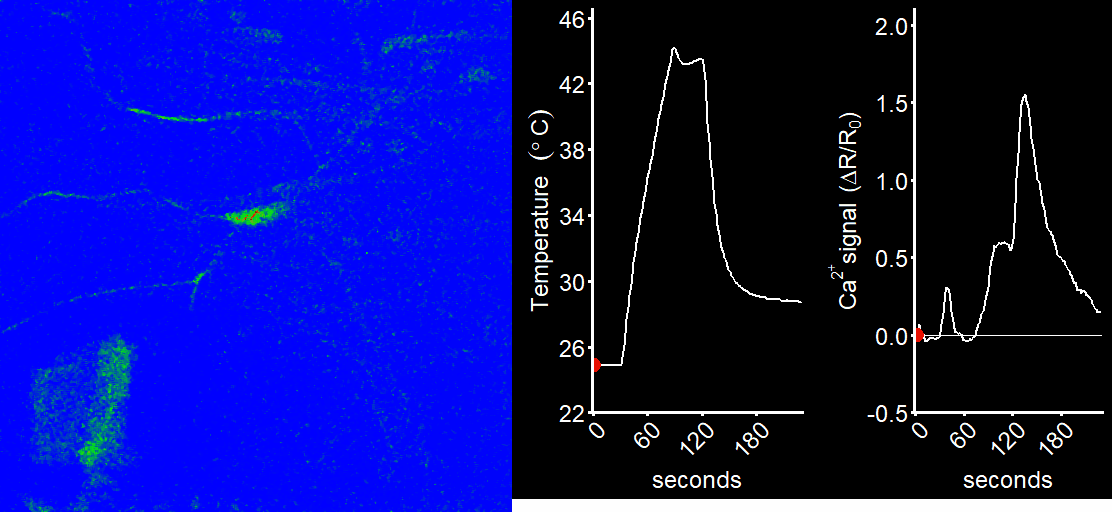The Jaszczak lab leverages the powerful genetic tools of the fruit fly, Drosophila melanogaster, to explore how nervous systems are built and tuned.
Every animal encounters a changing spectrum of sensory information during life, requiring the formation of unique behavioral responses. Disruption of neural function in the sensory system profoundly impacts many individuals, such as those with chronic pain or hyper-sensitivity in autism spectrum disorders. One of the lab’s central research objectives is to discover the developmental mechanisms which adapt behavioral responses to a dynamic environment.
We meld neuroscience, microscopy, and genetics into fundamental discoveries that will advance the design of treatments for chronic pain and developmental disorders.
Projects:
Mechanism of the steroid hormone switch

Our recent work defines a mechanism, through hormone signaling in called C4da neurons, which causes Drosophila larvae to respond to painful heat during the last half of larval development (Jaszczak et al. 2022). In contrast to the increased heat-induced behavior, we find that the ultraviolet light-induced activity of C4da neurons decreases as development progresses. This sensory switch in C4da neurons presents a tractable system for uncovering the mechanisms of steroid hormone regulation of sensory development. Current experiments aim to measure the dynamics of ecdysone receptor activity during the sensory switch and to determine the molecular pathway sensory switch transition.
Thermotaxis and developing preferences
Drosophila larvae also display a developmental sensory switch in their preference for warm and cool environments. Experiments with larval thermotaxis suggest an internal state temperature sensing mechanism exists during the period of the sensory switch in C4da neurons. Using machine learning techniques and our multi-sensory behavioral system, we are working to map the principle components of larval crawling to compare behavioral morphology during development across multimodal stimuli.

Circuit adaptation

How the information is connected and processed between external and internal sensory states is unclear. Five groups of second order and higher order neurons in the ventral nerve cord of the CNS have been identified as postsynaptic targets for C4da neurons. How these synaptic partners change between peripheral sensory neurons and their second order and higher order intern neurons over development has not been determined. We are comparing how different environmental variables during development intersect with the developmental sensory switch. Using GFP Reconstitution Across Synaptic Partners (GRASP) and Ca2+ imaging, we are exploring how these synaptic partners change over development and whether they form developmental specific circuits.